Tim Ferriss needs no introduction. I bet most of us listen to his excellent podcast and have read his articles and books. I have read all Tim’s books—some of them multiple times.
 The 4-Hour Workweek inspired a mind shift that helped me improve both the design of my business and my lifestyle. The 4-Hour Body featured various useful body hacks, and of course also introduced Pavel and examples of his hard style methodology. And before we get to Tim’s latest book, Tools of Titans, and Pavel’s segment of that book, let me say I was very impressed with the first few chapters of Tim’s third book, The 4-Hour Chef.
The 4-Hour Workweek inspired a mind shift that helped me improve both the design of my business and my lifestyle. The 4-Hour Body featured various useful body hacks, and of course also introduced Pavel and examples of his hard style methodology. And before we get to Tim’s latest book, Tools of Titans, and Pavel’s segment of that book, let me say I was very impressed with the first few chapters of Tim’s third book, The 4-Hour Chef.
I am not much of a cook, but the introduction to The 4-Hour Chef is dedicated to meta-learning and what Tim calls DiSSS and CaFE principles. These principles have helped me in everything I do, from martial arts to language learning. Below is an explanation of the acronyms. The words in italics are quotations taken directly from Tim’s book. It is an excellent sneak peek into Tim’s approach to acquiring any new skills, and of course, these principles can be applied to strength training, as well.
In this article, I took the liberty of applying these principles to what we do in StrongFirst. I will share examples both in my analysis, as well in a video I produced, a visual companion to Pavel Tsatsouline’s chapter in Tim’s new book.
But let us first explain the acronyms and apply the principles to what we do—strength training.
StrongFirst’s DiSSS and CaFE
DiSSS
DiSSS is, as Tim says, a “recipe for learning any skill.” He promises:
“It is possible to become world-class, enter the top 5% of performers in the world, in almost any subject within 6-12 months, or even 6-12 weeks.”
Sometimes even in few days—consider the SFG Level I Certification. Or sometimes in a few minutes—consider the tension lessons during the tension presentation of the Certification weekend, when it’s normal for half of the candidates to press a kettlebell weight they have never pressed before.
What does the acronym mean?
- D = Deconstruction: What are the minimal learnable units, the Lego blocks, I should be starting with?
- S = Selection: Which 20% of the blocks should I focus on for 80% or more of the outcomes I want?
- S = Sequencing? In which order should I learn the blocks?
- S = Stakes: How do I set up stakes, create real consequences, and guarantee I follow the program?
Now, let’s take this concept and apply it to StrongFirst:
Deconstruction = e.g. movement patterns (opposite e.g. to “muscle groups”). The traditional seven movement patterns are push, pull, hinge, squat, lunge, twist (rotation), and gait. My colleague Brandon Hetzler, in one of his excellent articles, goes beyond the movement patterns with his concept of movement strategies and fractals of movement patterns, and I like his approach very much.
Selection = For most people, usually two to three exercises are what they need to focus on in their strength training, like kettlebell goblet squat, swing, and get-up; or bodyweight one-arm push-up, pistol, and pull-up; or barbell deadlift, bench press, and squat. We will come to more examples of top strength exercises in the video below.
Sequencing = or what we usually call progression. A few examples:
SFG Kettlebell: First you learn a hip hinge. After that, deadlift. Deadlift leads to a two-hand kettlebell swing kettlebell swing and all its variations, which leads to the clean, which leads to a snatch.
SFL Barbell: We teach most of our barbell lifts on the foundation of kettlebell lifts. If we want to teach a student a barbell back squat, we start with a kettlebell goblet squat review. After that we may proceed first to a barbell Zercher squat (which has the load in front of the body) and after that finally to a back squat. Each progression may or may not have multiple steps, according to the needs of the student.
SFB Bodyweight: When it comes to pull-ups, most people jump right on the bar and start with some kind of assisted pull-up. But since we know the great benefits of the “hollow position,” we start there, and not on the bar, but on the floor, in a series of progressions “from zero to hero.” After that, we proceed to a hollow hang, (assisted) chin-ups, and finally pull-ups.
These progressions do not necessarily go from A to B to C—one gentleman’s or lady’s progression might be another person’s regression. We may skip some steps, but we do not miss them.
Stakes = Well, why do you think I have started my training log Repeat Until Strong on the StrongFirst forum? If you have not started one yourself, do it.
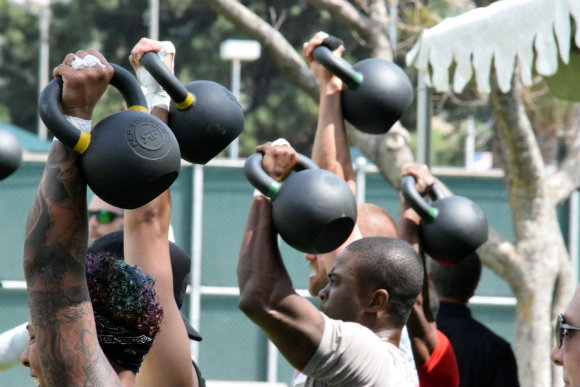
CaFE
CaFE, as Tim says, “are several secondary principles, that, while very helpful … are not required.” So, apart from the fact that coffee is good, what does the acronym mean?
- C = Compression: Can I encapsulate the most important 20% into an easily graspable one-pager?
- F = Frequency: How frequently should I practice? Can I cram, and what should my schedule look like? What growing pains can I predict? What is the minimum effective dose (MED) for volume?
- E = Encoding: How do I anchor the new material to what I already know for rapid recall?
Now, let’s take this concept and apply it to StrongFirst:
Compression = Simple & Sinister as well as other Pavel’s programs (SFB Bodyweight’s The Naked Warrior or SFL Barbell’s PTTP). Example: 3×5 goblet squats, 10×10 swings, 5×1 get-ups each side, stretch, done.
Frequency = Many people new to StrongFirst feel they aren’t doing enough because they don’t feel trashed after each practice session. Yet, they get significantly stronger while practicing fewer exercises and spending less time in the gym. In the words of famed performance coach Henk Kraajenhof, we aim to “do as little as needed, not as much as possible.”
Encoding = The easiest way to learn a new skill is to build on the foundation of an already familiar drill. We teach bent press using the kneeling windmill phase of a get-up, barbell front squat on the foundation of a kettlebell goblet squat, and the hanging leg raise on the foundation of a tactical pull-up. It is “just like Y, but now you do X.”
Moreover, our system is principle based, and the principles are universal—once you attend one Course or Certification, you will be able to apply that knowledge using different tools, as well as in the life “out there.” Again, “it is just like in X, but you do Z.”
Summary: It sounds like The 4-Hour Training Week to me.
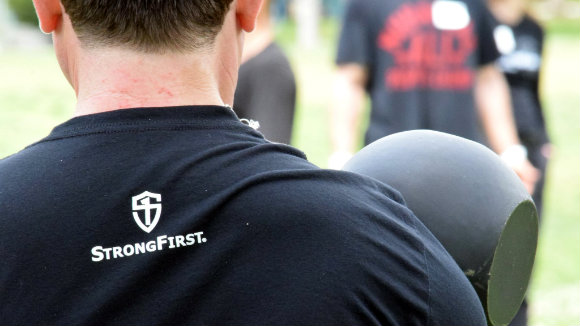
Pavel Tsatsouline on the Science of Strength and the Art of Physical Performance
This was the name of episode 55 of The Tim Ferriss Show, and in Tim’s own words:
“This episode was a real treat. It was one of the most enlightening and lucid conversations about physical training I’ve ever had. If you want strength, power, endurance, and flexibility, it’s all covered in this one interview.”
The episode was so successful that Tim actually did a follow-up, in which Pavel answers fifteen questions form the readers. Both podcasts ended up serving as the foundation for Pavel’s chapter of Tim’s long-awaited new book, Tools of Titans. And as with all Tim’s previous books, it is a must read.
Tim wrote:
“For the last two years, I’ve interviewed more than 200 world-class performers for my podcast, The Tim Ferriss Show. The guests range from super celebs (Jamie Foxx, Arnold Schwarzenegger, etc.) and athletes (icons of powerlifting, gymnastics, surfing, etc.) to legendary special operations commanders and black-market biochemists. For most of my guests, it’s the first time they’ve agreed to a two-to-three-hour interview…
This book contains the distilled tools, tactics, and ‘inside baseball’ you won’t find anywhere else. It also includes new tips from past guests, and life lessons from new ‘guests’ you haven’t met.”
StrongFirst’s Tools of Titans Video Companion
Some readers, who are not familiar with our School of Strength, the system, and the exercises, may not know all the drills, which are mentioned in the chapter. They can of course spend some time trying to find them on YouTube, but what they find may not necessarily be exemplary of what we do in StrongFirst.
To make life easier (regarding searching for info, not practicing), my wife Justyna and I created a short overview video of all the exercises featured in Pavel’s chapter.
The drills are listed in the order in which they appear in Pavel’s chapter of Tools of Titans as well as in the video:
- Halos
- Cossack
- Deadlift
- One-arm swing
- Get-up
- Goblet squat
- Hollow position
- Tactical pull-up
- Grippers
- Power breathing
- Hollow rocks
- Janda sit-ups
- Hanging leg raise
- Hard style plank
- Hard style plank with feet elevated
- One-arm push-up
- One-arm push-up with hands elevated
- Windmill stretch
Check them out in the video above and get strong—get StrongFirst!
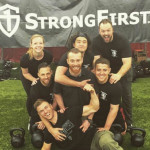
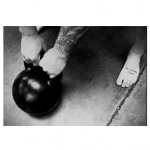
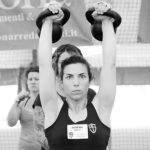
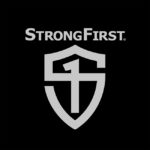
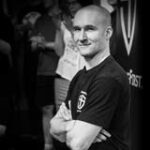






I can’t understand what’s going on in power breathing. Looks like someone’s going super Saiyan.
Brad, I had to google what “super Sayian” means 🙂
Power breathing is about increasing the intra-abdominal pressure for strength and safety. It may look/sound weird (especially in a short clip like this), but it is one of the most important tools.
Power breathing is taught at all StrongFirst courses. Please refer also to Pavel’s book – especially The Naked Warrior, PTTP, and Hardstyle Abs for detailed description.
Perfect on so many levels. I am currently reading Tools Of Titans, and was thinking some one from StrongFirst should make a video to coincide with the book. You two did an incredible job showing the world how to perform the exercises. Thank you!
Thank you for your kind words, Sean.
The article is just awesome. Thanks for share it.
Thank you Ashok Kumar G!
This is exactly what’s missing with the chapter in the book! Thanks a lot!
Thank you Matt, that’s what I thought. I am glad you find it useful.
#marketing
Great Pavel!
Thank you, my friend, best regards from Prague!
Great work,as always, Pavel!
Thank you Cole! Ahoj!
Pavel, I always love your articles: so on point. I’ve gotten something valuable out of each and every StrongFirst article, but yours are the ones I consistently bookmark. Thanks for spending the time to make them so thorough and relevant.
I agree!
NTColman, Nikky: thank you for your kind words.